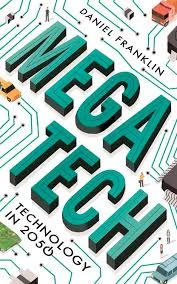A friend of mine recently suggested I read Eating on the Wild Side: The Missing Link to Optimum Health by Jo Robinson. I found the book fascinating and overwhelmed my husband with the facts and figures about nutritional content and history of fruits and vegetables. Anyone interested in choosing the most nutritious varieties to get the most from their meals should read this book. It has also inspired me to redesigning my garden for next spring to include a berry bush and quite possibly an apple tree (there may not be space for the tree though).
How to Kill a City by Peter Moskowitz
In cities across America we are seeing the negative effects of gentrification and how it has the potential to destroy culture, heritage, and displace long time residents. People are being priced out of homes, forced to "drive until they qualify." This phenomenon may seem relegated to high population centers like New York City and the tech hubs in California, but it lies in struggling communities like Detroit and New Orleans as well. No city is protected from the results of increased investment and spending.
Mega Tech: Technology in 2050
Bullets that can move around objects in air, self driving vehicles, drones filling the sky, a neural interface connecting your mind with the internet, and farm equipment that can be sent out to work your field while you are on vacation. These all seem like ideas from a fiction novel, but many of them will be realized by the year 2050. As a planner, I often look twenty years in the future to make predictions and make plans for the best possible growth patterns. The book, Mega Tech edited by Daniel Franklin, looks out more than thirty years to suggest what the future could hold.
Design with Nature by Ian McHarg
Cities all across the world are realizing their mistake in covering up natural features to construct bigger and better communities. After decades of building over rivers and streams, dredging wetlands for lakes, and sprawling across prime agricultural land, we are finally seeing the devastating impacts. The solutions to these problems are already being implemented, quicker in some municipalities than others, but they have at least started to make progress unearthing the natural features that have long been suppressed under the concrete jungle.
Evicted by Matthew Desmond
As a city planner working with a rental licensing program I found Evicted by Matthew Desmond to be an eye opening and insightful book on the life of both renters and landlords. Desmond tells the story of the rental climate of Milwaukee in 2008 and 2009, just after the housing market collapsed and rents soared through the roof. While the situations Desmond wrote about in the book occurred almost ten years ago, they still proliferate throughout the U.S. today.
Genius of the European Square by Suzanne H Crowhurt Lennard and Henry L Lennard
Imagine yourself seated on a patio overlooking a large public square. You are enjoying evening drinks with some friends before you run a few errands on the plaza on your way home for the evening. While you are seated, an old acquaintance happens by on their way to pick up a few groceries. They sit down and join in the conversation for a little while, watching their child play at the fountain a short distance away. As the sun sets everyone pays their tab, says their good byes, and heads off in different directions.
If You Want to Write by Brenda Ueland
As a result of a recent preservation battle to save a 117 year old house in Minneapolis I began looking into the life of a former local author, Brenda Ueland. She was born in Minneapolis in 1891 and passed away at the age of 94 while residing at 2622 West 44th Street. It was this home that caused a controversy because the new owner set his sights on demolition in favor of more dense residential construction. The neighborhood was outraged that the City would let the last remaining tie to Ueland go, altering the area in a significant way. The City Council voted for the developer, against the decision of the Heritage Preservation Commission.
The Permaculture City by Toby Henemway
To those like myself who did not know what permaculture was before coming across this book I will give a quick summary. Permaculture principles include both natural and human ecosystems. While it tends to be thought of as a system for designing gardens, it can be applied to a range of human activities that are both physical and non-physical. The permaculture flower is composed of ten human needs: water, shelter, waste, health, spirit, community, justice, livelihood, food, and energy. The flower, and the cities it represents, function properly when the relationships and connections between the parts is considered. Most strategies look at the sum of the parts only and loose the valuable connections that underlay the system.
Connectography by Parag Khanna
Connectography is not a light summer read for the beach. This book is packed full of insights and ideas for a global economy founded on a priority to expand infrastructure. There are two main takeaways: we need better investment in infrastructure-both hard and soft- and a greater emphasis on mapping.
Happy City by Charles Montgomery
Happy City does not introduce a radical new concept for shaping cities. As the author, Charles Montgomery, points out, Athenians strove for pure happiness as far back as the fifth century A.D. They coined the state of achievement, eudaimonia. Centuries later, in 1943, Abraham Maslow categorized five levels of human needs.










